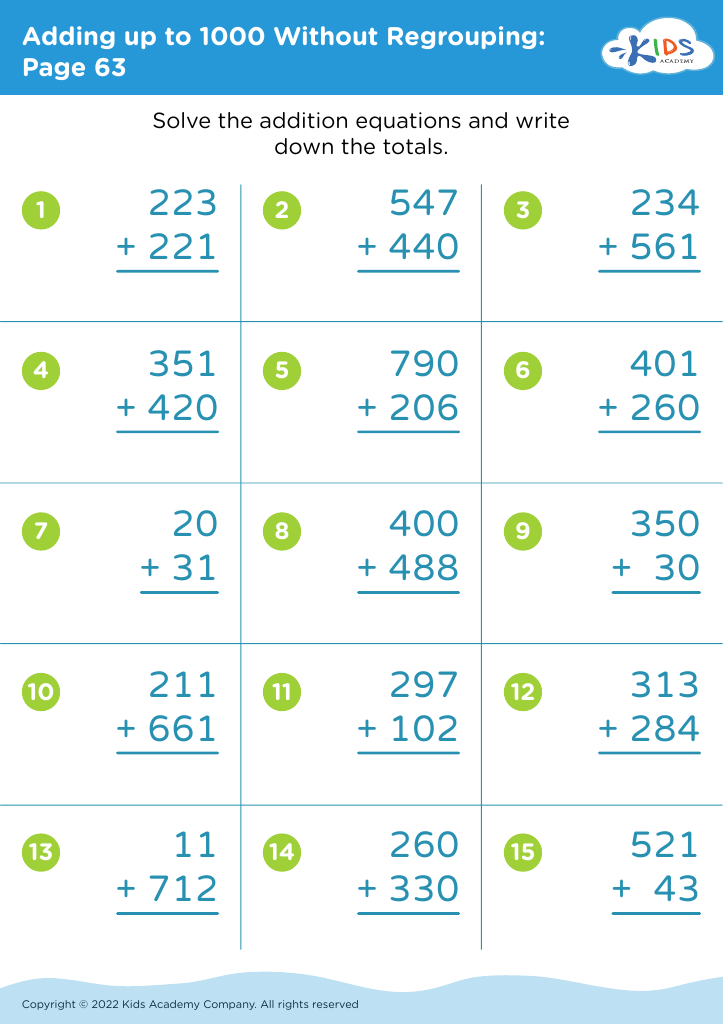Ratio application Worksheets for Kids
1 filtered results
-
From - To
Question/Answer
What are some effective activities to train students’ Ratio application skill when teaching them about Adding up to 1000 Without Regrouping?
To train students in ratio application while teaching them to add up to 1000 without regrouping, use activities like: 1. Partnered problem-solving where students share ratios of different addends to make 1000. 2. Matching games with cards showing different ratios that sum up to 1000. 3. Interactive puzzles that require arranging pieces to visually represent ratios adding to 1000. 4.
How does the mastery of the Ratio application skill affect a student's performance at an early age?
Mastery of the Ratio application skill at an early age significantly enhances a student's performance by improving their mathematical reasoning, problem-solving abilities, and understanding of proportional relationships. This foundational knowledge is crucial for success in advanced mathematics and science courses, fostering a strong analytical mindset and enabling students to apply mathematical concepts to real-world situations effectively.
How to test a Grade 2 student’s Ratio application skills?
To test a Grade 2 student's Ratio application skills, provide simple, real-world scenarios requiring them to compare quantities. For example, ask them to distribute a small number of items (like fruits or pencils) between two groups ensuring each group has a specific ratio, such as 1:2 or 2:3.













